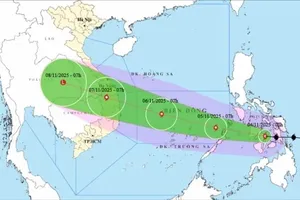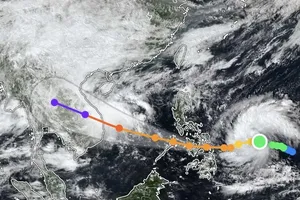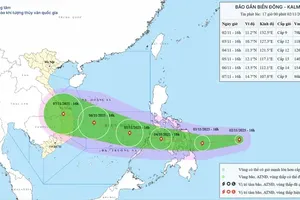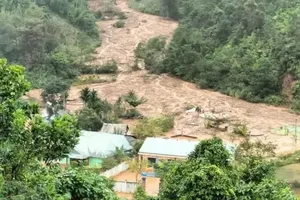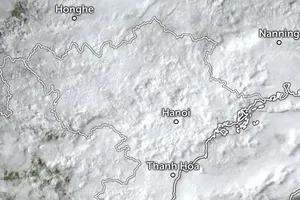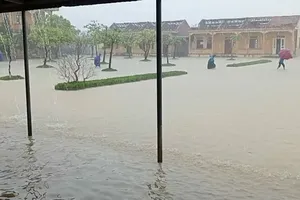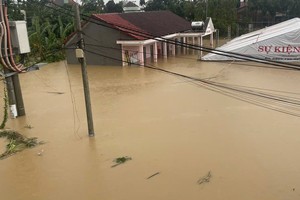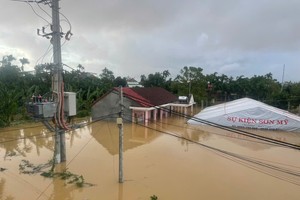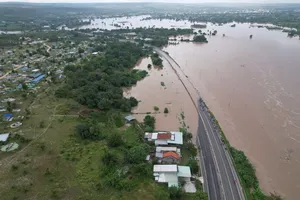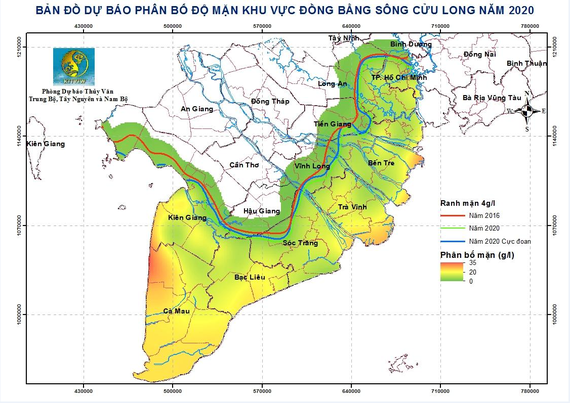
A tidal time is announced to happen from December 27th to January 4th of the lunar calendar.
At that time, saline sea water will possibly enter 55- 56 kilometer mainland of the Southern region because the Mekong River faces a water depletion.
From January 23-27 (falling from December 29th to January 3rd of the lunar calendar), the Northern and mid- Central regions are expected to suffer a chilling climate triggering possibly few showers in the nighttime and early mornings.
Meanwhile, the South- Central, Central Highlands and Southern provinces and cities are warned to enjoy a beautiful weather situation of sunshine with less rain, an average temperature between 21 degrees Celsius and 35 degrees Celsius.
From Lunar New Year's Eve, both the Northern region and provinces from Thanh Hoa to Ha Tinh is forecast to welcome a northeastern monsoon bringing much cooler air and rainy spells while people in the Central provinces across Quang Binh to Hue will enjoy deep cloud, light sunshine and showers at daytime and chilling air at nighttime. The lowest temperature in the areas will reach 17- 20 degrees Celsius.
At the seminar, Vice Director of the National Hydrology Meteorology Forecast Center Hoang Phuc Lam issued a climate trend in 2020.
During the first half of 2020, El Nino weather phenomenon will maintain warm- phase neutral condition askew, lasting in the next months of the year.
The extreme cold waves will have a tendency to gradually happen in the second half of January and February.
Tropical cyclones trekking across the East Sea will have a tendency to be less than or equal to the average of many years, to operate powerfully in the Central region and the southern territorial waters in the last months of this year.
Therefore, it is necessary to prevent from dangerous weather conditions of lighting, thunderstorm and hail in the seasonal change.
The Mekong Delta is expected to battle for the highest saltwater influx in the next couple months.
At that time, saline sea water will possibly enter 55- 56 kilometer mainland of the Southern region because the Mekong River faces a water depletion.
From January 23-27 (falling from December 29th to January 3rd of the lunar calendar), the Northern and mid- Central regions are expected to suffer a chilling climate triggering possibly few showers in the nighttime and early mornings.
Meanwhile, the South- Central, Central Highlands and Southern provinces and cities are warned to enjoy a beautiful weather situation of sunshine with less rain, an average temperature between 21 degrees Celsius and 35 degrees Celsius.
From Lunar New Year's Eve, both the Northern region and provinces from Thanh Hoa to Ha Tinh is forecast to welcome a northeastern monsoon bringing much cooler air and rainy spells while people in the Central provinces across Quang Binh to Hue will enjoy deep cloud, light sunshine and showers at daytime and chilling air at nighttime. The lowest temperature in the areas will reach 17- 20 degrees Celsius.
At the seminar, Vice Director of the National Hydrology Meteorology Forecast Center Hoang Phuc Lam issued a climate trend in 2020.
During the first half of 2020, El Nino weather phenomenon will maintain warm- phase neutral condition askew, lasting in the next months of the year.
The extreme cold waves will have a tendency to gradually happen in the second half of January and February.
Tropical cyclones trekking across the East Sea will have a tendency to be less than or equal to the average of many years, to operate powerfully in the Central region and the southern territorial waters in the last months of this year.
Therefore, it is necessary to prevent from dangerous weather conditions of lighting, thunderstorm and hail in the seasonal change.
The Mekong Delta is expected to battle for the highest saltwater influx in the next couple months.


